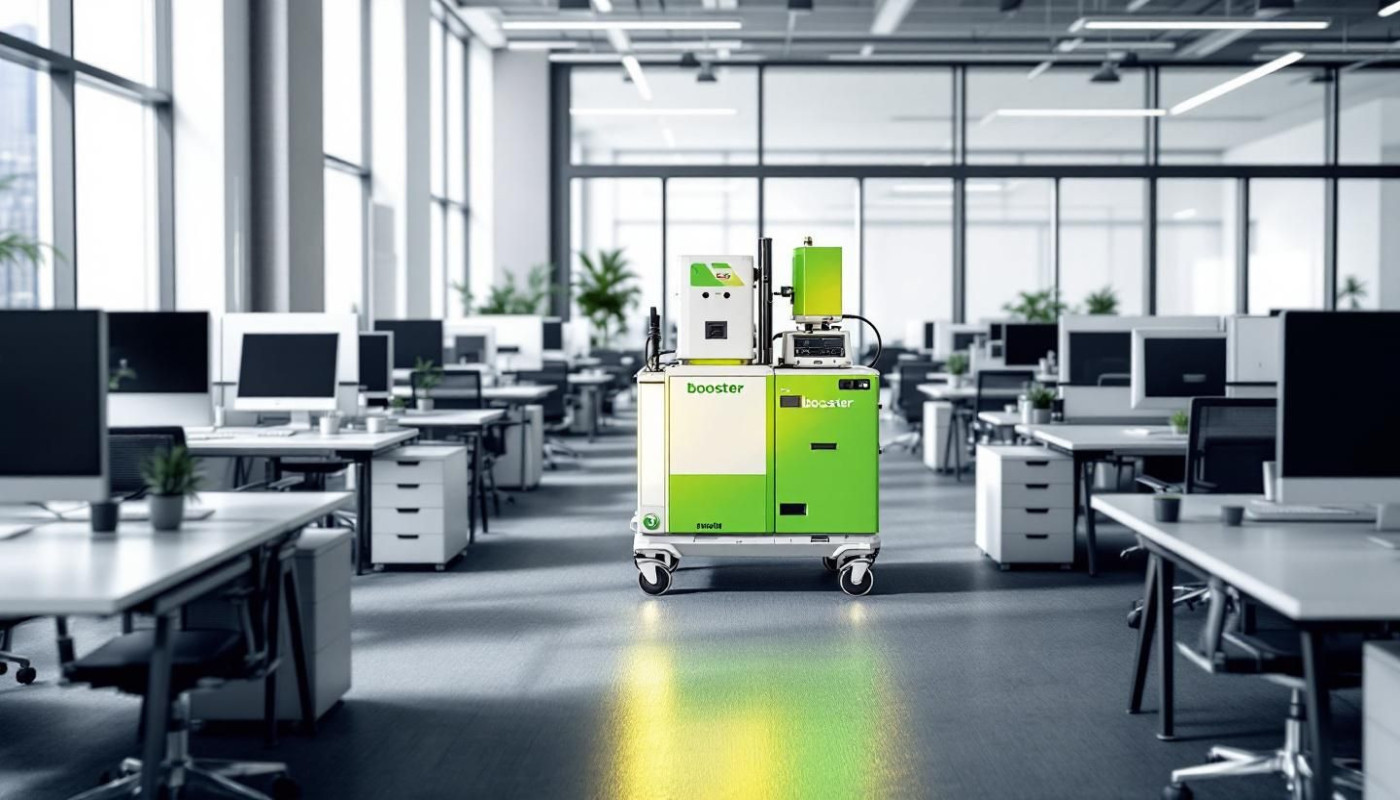Table of contents
Imagine stepping into a world where digital and physical realms converge, transforming the way we interact with information, entertainment, and each other. This is not the stuff of science fiction anymore; it's the burgeoning reality of holography—a technology that is poised to redefine our daily experiences. As holographic displays become increasingly sophisticated, they promise to revolutionize various sectors, from education to healthcare, and from entertainment to telecommunications. The potential for holographic technology to enhance our lives is vast and varied, making it a subject of immense intrigue and potential. How will this technology integrate into our routines, and what changes can we anticipate in our homes, workplaces, and public spaces? As we stand on the cusp of these exciting developments, this discussion beckons the reader to delve into the fascinating prospects of holography's role in our not-so-distant future. Engage with this exploration of a technology that may soon become as commonplace as the smartphone, and discover the myriad ways holographic applications could become an integral part of our everyday lives.
The Technological Evolution of Holography
The journey of holographic technology, often referred to as optical holography, is a fascinating tale of scientific ingenuity and creative exploration. From its early inception in the late 1940s, pioneered by Hungarian-British physicist Dennis Gabor, to the captivating displays seen in contemporary media, holography has traversed an impressive path. Gabor’s breakthrough came from the desire to improve electron microscopy, which consequently laid the groundwork for optical holography. The development was gradual until the invention of the laser in the 1960s, which provided a coherent light source necessary to produce clear and detailed holograms.
Over the decades, key advancements have continued to propel holographic technology forward. The refinement of lasers, along with improvements in recording mediums and computational methods, have enabled holograms to become increasingly realistic. Today, interactive holograms are no longer confined to the realms of science fiction. They are used in a variety of applications, from medical imaging and data visualization to entertainment and advertising, offering an interactive and immersive experience.
Looking ahead, the potential for holograms in everyday life is immense. As technology advances, we can foresee holograms that are more integrative with our daily environments, potentially replacing some traditional displays and offering new ways to interact with digital content. The significance of these developments cannot be overstated, as they promise to enhance the way we work, learn, and connect. Indeed, the future projections for holographic technology hint at a world where three-dimensional, interactive displays become a commonplace aspect of our daily lives, enriching our experiences with a level of immersion that was once unimaginable.
Practical Applications of Holograms
The advent of holographic technology has opened up a world of possibilities across multiple sectors. Healthcare holography is revolutionizing the medical field by providing doctors with volumetric displays of organs, allowing for intricate procedures to be planned with a level of precision previously unimaginable. Surgeons can interact with these 3D projections, effectively reducing risks during complex operations. In education, holograms serve as dynamic teaching tools, creating immersive learning environments that enhance student engagement and understanding of complex subjects by bringing textbooks to life.
The retail industry is also harnessing the power of holography to create innovative shopping experiences. Customers can view products in a 3D form, such as seeing clothes on a holographic mannequin or a piece of furniture in a virtual room, making it easier to visualize purchases in real-life settings. Meanwhile, holographic communication is redefining the way we connect, enabling lifelike meetings between individuals situated across the globe, thereby reducing the need for travel and making interactions more personal than traditional video conferencing.
The benefits of these applications extend to both professionals and consumers by enhancing educational outcomes, improving patient care, driving consumer engagement, and enabling more effective communication. With technological advancements rendering holographic devices more user-friendly and cost-effective, the accessibility of this cutting-edge tool is set to become a staple in our daily lives. As holograms grow more sophisticated and ubiquitous, they are poised to transition from the realm of science fiction into practical, everyday use.
Holography in the Consumer Space
The integration of holography into the consumer space promises to redefine how individuals interact with technology both in the privacy of their homes and within public environments. With the advent of consumer holography, we are poised on the brink of a new era where home entertainment is transformed by three-dimensional, interactive displays, bringing characters and scenes to life in our living rooms. Holographic devices, leveraging augmented reality (AR) holography, are set to revolutionize the way we consume media, offering a fully immersive experience that transcends traditional flat screens.
In personal communication, holography will facilitate a leap from video calls to lifelike projections of our loved ones, enabling interactions that mimic physical presence, thus adding a new dimension to our connections. The implications for home design are equally profound, with the potential for holographic interiors that can be altered at a whim, from dynamic wallpapers to art that evolves in real time. Public space innovation, meanwhile, will see holographic signage and information displays become commonplace, enhancing the way we navigate and engage with urban environments.
As these technologies mature, their assimilation into the fabric of daily living is inevitable. The convenience and enhanced experience offered by holography will likely see its swift adoption. As a result, consumer holography is anticipated to become a ubiquitous element of modern existence, profoundly impacting our leisure, communication, and interaction with the physical world around us.
Challenges and Considerations for Holographic Integration
Holographic technology promises to revolutionize our daily experiences, from communication to entertainment. Yet, as we usher in this wave of innovation, a host of technical, ethical, and practical challenges emerge. A primary concern is holographic privacy, where the potential for intrusive data capture through holographic devices could lead to misuse of personal information. In terms of technical obstacles, the complexity of light field display systems, which are pivotal in creating high-quality holographic images, also poses significant hurdles in terms of cost and accessibility.
Moreover, data security is a significant issue, as holographic applications will likely store sensitive information that, if compromised, could lead to privacy violations and identity theft. Another profound concern is the digital divide, highlighting the disparity between different socio-economic groups in accessing cutting-edge technology. This gap could widen with the advent of holographic tech if measures aren't taken to ensure equitable access.
Addressing these concerns necessitates a multi-faceted approach. Regulations and standards for data protection specific to holographic applications need to be developed and enforced. Furthermore, advancing and scaling light field display technology could lower costs and broaden adoption. Overall, a concerted effort is needed to mitigate the digital divide by promoting technology literacy and subsidizing access where needed, ensuring that the adoption of holographic technology is responsible, inclusive, and fair.
The Social and Cultural Impact of Holography
As holographic technology transitions from science fiction to everyday utility, its influence on social change and cultural impact is poised to be profound. Holography can revolutionize human interaction, allowing for more immersive and interactive forms of communication that transcend geographical boundaries. Imagine a world where distant friends and family can be present through lifelike holograms, augmenting the sense of closeness and connection. In terms of cultural consumption, the arts, entertainment, and education sectors could undergo transformative shifts, offering experiences that are more engaging and personalized. Holography promises to enrich the collective imagination, giving rise to new art forms and storytelling techniques that blend the physical and digital worlds, thereby fostering a uniquely altered reality. This integration of virtual and physical spaces is encapsulated in the concept of Mixed reality (MR), where holographic content is not just viewed but interacted with, paving the way for innovative expressions of culture and shared experiences that challenge our very perception of what is real. As such, the societal fabric could be reshaped as holography becomes ingrained in daily life, influencing everything from social etiquette to cultural norms.
On the same subject










